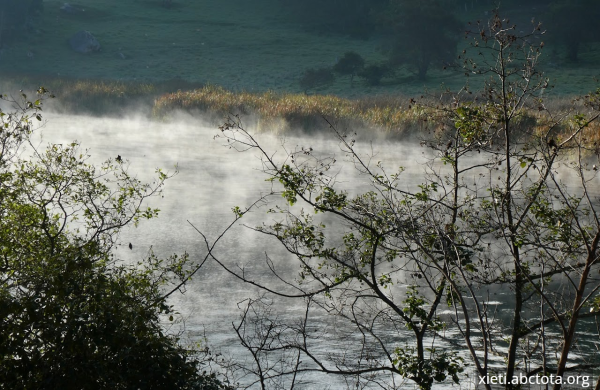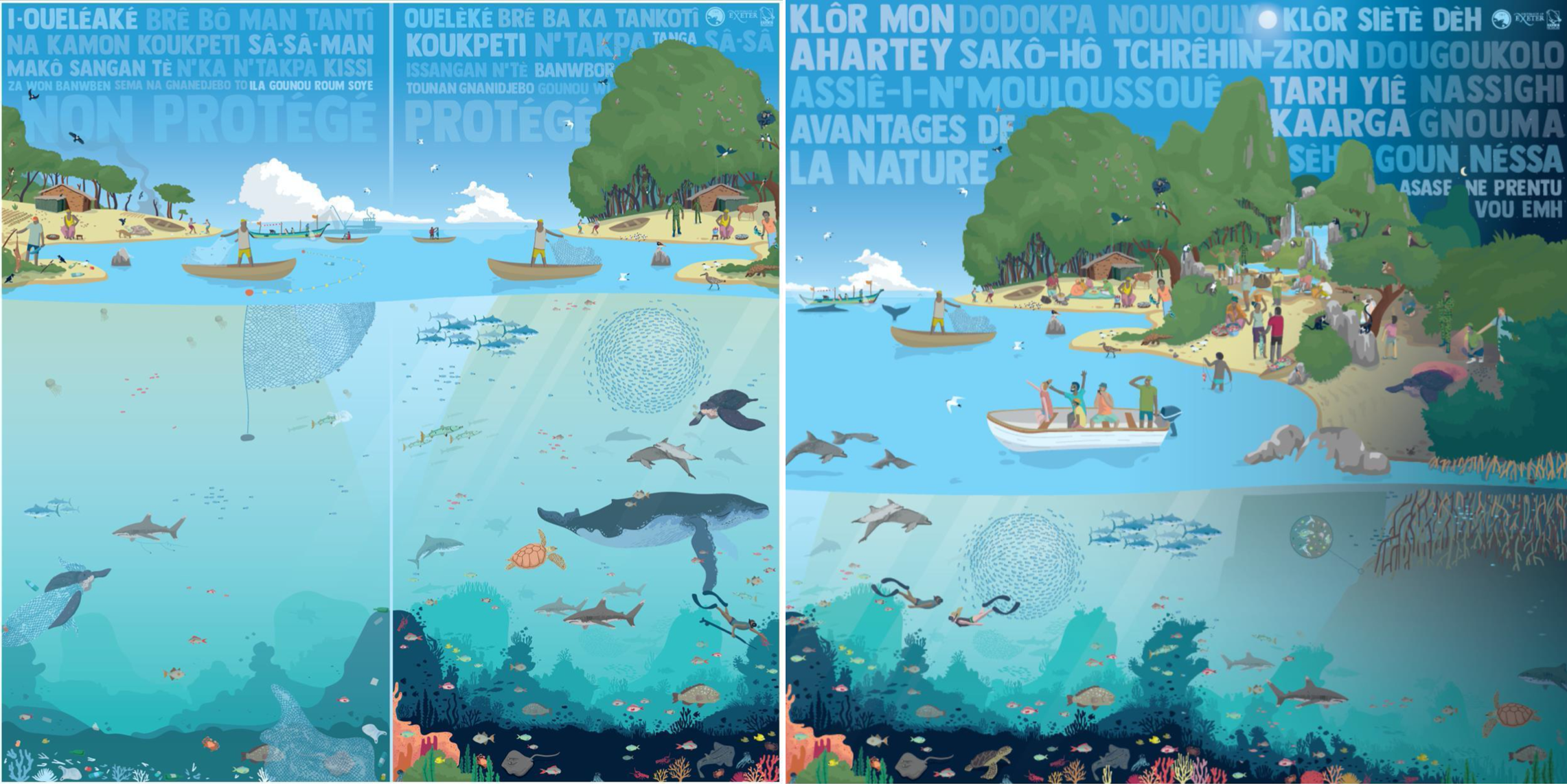

On December 21, 2020, the Government of Côte d’Ivoire (Ivory Coast) announced its first Marine Protected Area (MPA) in Grand-Béréby. The 2,600km2 MPA location includes important sea-bed habitats and reef ecosystems, as well as globally significant nesting and foraging grounds for the leatherback, green and olive ridley turtles. It will also protect more than 20 species of sharks and rays, including hammerheads, manta rays and guitarfish – a group of rays now considered the world’s most threatened marine fish.
Prior to this stage, CEM (Conservation des Espèces Marines or Conservation of Marine Species), an African-European NGO founded in 2015, played an important role. Their primary objective always was to protect marine turtles at this 40km long coast of Côte d´Ivoire: The olive ridley, Lepidochelys olivacea, the leatherback, Dermochelys coriacea, and the green sea turtle, Chelonia mydas, successfully reproduce at Grand Béréby.
The creation of the MPA is the culmination of years of work by the Ivorian government, the Abidjan Convention, the Swedish Government, and CEM as the essential local NGO. CEM worked, among others, in partnership with and received support from the University of Exeter, the Wildlife Conservation Society (WCS), Rainforest Trust, oceanBASIS, Manfred Hermsen Stiftung, US Fish and Wildlife Service, and from the German-based CEM-Europe. The later was established in honour of Olaf Grell, who had engaged himself several years on-site for CEM. The project “Grand Béréby” also received Blue Solutions‘ recognition (cooperation of GIZ, IUCN, UNEP and GRID-Arendal). LT&C had reported several times about the project development and involvement of its members.
Most important, however, for the success of the project is the support received from the local people and tourism businesses.
Tourism is already a significant economic factor in Grand Béréby and the surrounding area. The location about 50 km west of San Pedro with a flight connection to Abidjan is already used by larger hotels such as “Bay de Sirenne”, “Katoum” and “La Flotte”. Smaller accommodation providers are located in Meneké and Maní. For tourism, the marine reserve is a major attraction.
There is great potential for nature- and ecotourism, as well as for guided day tours into the protected area, due to the beauty and diversity of the landscape.
The hotel “Palm-Rock-Beach” in San Pedro also offers day tours and involves its neighbours, guests and employees in actions for the protection of sea turtles. For example, egg clutches endangered by the strong coastal dynamics are brought to a “safe” harbour. In addition, up-to-date information and contact addresses about the sea turtle project are also available in the hotels mentioned. The local residents could and should benefit more from day tours than they have so far. There is a need for investment and training here. Potential future starting points for guided tours are the staff of the sea turtle conservation project, as well as the “eco guards” from the adjacent protected area “Reserve Faune a l’embouchure du fleuve Dodo”.
In the course of the past years, local knowledge about the sea turtles, their biology and their habitat has been anchored and enormously expanded. The awareness has grown that the habitat of the sea turtles and these respectful organisms themselves represent a value for the local population, and is one of the cornerstones for sustainable development in the region.
This is a good LT&C-Example, because the project for the creation of the Grand Béréby MPA received educational, political and even financial support from tourism. All tourism stakeholders in the local area, CEM is aware of, supported the project in one way or the other. Due to the many years educational work of CEM, the US Fish and Wildlife Service and others, more and more got the local people aware of the value sea turtles have, if their populations remain healthy in their natural environment. People understood that tourism can provide revenue for local well-being, more revenue than removing, harvesting, and selling the limited amount of turtle eggs.
The establishment of an MPA is a promising concept for sustainable management that provides both incomes for the local communities and securing the future of their sea turtles.
Several hotels in the area, such as “Katoum”, “La Flote”, “Kara Krou” and “Tabbaoulé” are actively involved in the educational work. They send their clients to watch egg-laying turtles, pay for CEM’s eco guards and participate in saving egg nests and releasing newborn turtles.
From the government level the Ministry of Tourism is interested in the protected area as they believe it becomes an attractive tourism destination. Recently the Ministry supported CEM in the training of 24 tourist eco-guides.
To fully implement the MPA, a spatial planning process needs to follow. If, e.g. applying for UNESCO Man & Biosphere status, a larger no-fishing core zone, sustainable use- and buffer zones need to be planned. Enforcements to eliminate illegal fishery done by foreign trawlers in the offshore waters should go hand in hand with zoning the area. It would benefit both fish populations and local fishing. Further research and participatory work with local communities are planned by the relevant governmental agencies and supported by international research institutions, such as the University of Exeter, related to international aid agencies.
Increased engagement in conservation activities by local and also national tourism businesses could profile the LT&C-Example even internationally. The sea turtle area is also rich with beautiful beaches, unique landscapes, and picturesque views. There is a high potential for individual and nature-based tourism. Carefully planned and sustainably supported by international aid agencies, conservation organisations and tourism sources, could lead to a world-known LT&C-Example, where tourism is the base for functioning conservation and local, sustainable development.
As the government plans to create a network of at least five MPAs in Côte d’Ivoire, Grand Béréby could serve as a blueprint for the other four reserves: the cross-border site of the mouth of the Cavally river in Tabou (Ivory Coast – Liberia), the site of the Dassioko classified forest, the site of the Azagny national park and the cross-border site of the Ehotilés islands (Ivory Coast – Ghana).
It could also serve as a reference for international sites, where tourism and sea turtles come together. Tourism has been observed worldwide as a successful approach to protecting sea turtles.
© Linking Tourism & Conservation (LT&C) 2019
We are grateful that you support the work and mission of LT&C! We accept donations through Credit Card, PayPal or international bank transfer:

Donate through Credit Card
Please click the Donate button and then choose your PayPal account
Bank details:
Cultura Sparebank
Pb. 6800, St. Olavs plass
N-0130 Oslo
Name: Linking Tourism & Conservation,
Account no.: 1254 05 95168
IBAN: NO8712540595168
BIC/SWIFT: CULTNOK1
Routing BIC: DNBANOKK
Please mark payments with your name and/or email address
Sign up for an LT&C membership by filling in the details below.
Would you like your LT&C-Example/Initiative to be listed on our website? Please fill in the form below.